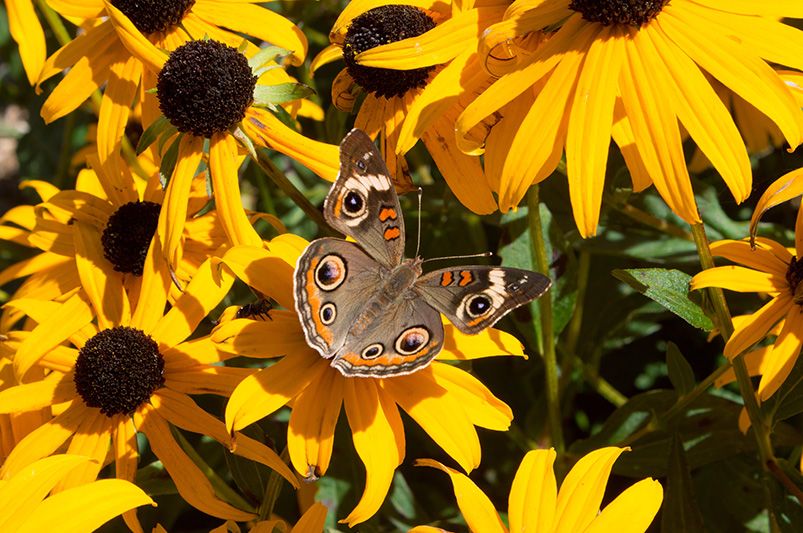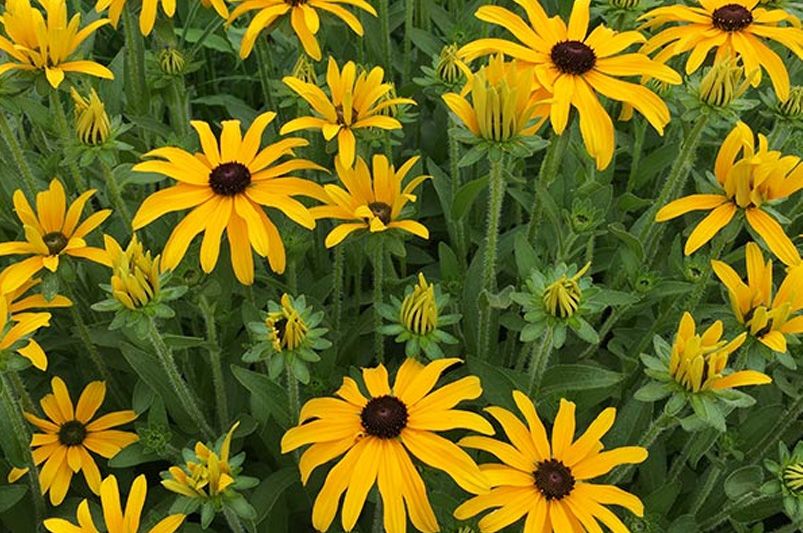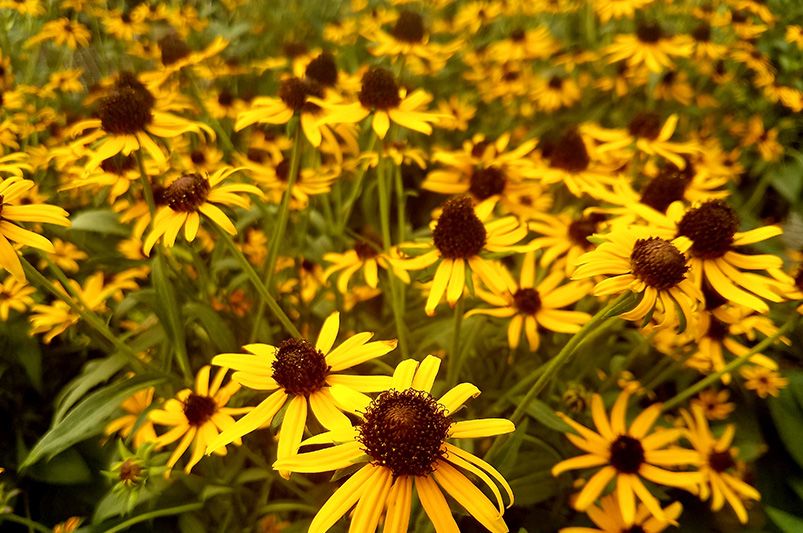
Planting Smiles: Black-eyed Susan Made Easy
Published: 06/06/2024 | Updated: 05/08/2024
How to Grow and Care for Black-eyed Susan
The Rudbeckia Hirta, also known as gloriosa daisies or Black-eyed Susan, has rough-textured green leaves with a broad oval shape. Daisy-like rays of bright yellow flowers with dark center discs cover them. This wildflower, which is endemic to the Midwest, grows in natural settings and by the sides of roadways.


It is endemic to the central United States. Because it self-seeds, it’s an excellent option for gardens with lots of wildflowers. You can plant it in the spring after the last frost. Even though some of those plants might come back and continue to bloom for a few more seasons—and are hence occasionally referred to as transient perennials—you can’t depend on them. Relish it when it occurs!
The Rudbeckia genus come in a wealth of varieties, and most of the 25 species are real workhorses that rarely have issues. It also has the hairy, prickly leaves typical of its genus—which, while not one of its greatest qualities, can help deter pests.
Care for Black-eyed Susan
Dead-heading aside, Black-eyed Susan take little care and are easy to establish and naturalize. The plants continue to bloom longer when the faded flowers are regularly dead-headed. You can leave the season’s final blooms on the plants to produce seed heads that will sustain the birds during the winter. A significant amount of self-seeding will also occur, which may not be a terrible thing as you’ll always have a fresh set of flowers to brighten up your indoors.
Light Requirements
In the full sun, Rudbeckia variants of all kinds will flourish. Still, certain cultivars will tolerate mild shade, particularly the perennial black-eyed Susan (Rudbeckia ‘Goldsturm’) and the sweet black-eyed Susan (Rudbeckia subtomentosa).
Soil Preferences
From clay to loam, many varieties of soil are acceptable to Rudbeckias. Add organic matter to your very sandy, quickly drying soil to assist it hold on to moisture. If your soil keeps a lot of water, go for Sweet Black-Eyed Susan. Regardless of the type of soil, Black-Eyed Susan are pretty easygoing. Their ideal soil has a pH of approximately 6.8, is well-drained, and is not very rich.
Water
To help the plants establish themselves, give them plenty of water throughout their first growing season. An inch of water per week from irrigation or rainfall will do. Once established, they are very drought tolerant.
Applying Fertilizer
You want to apply fertilizer pretty sparingly. Even in poor, infertile soil, Black-eyed Susan grow. All they should require is a side dressing of compost.
Propagation
Being a perennial with a short lifespan, Black-eyed Susan may not live long enough to develop big, thick clumps. If it does, however, you can divide it for multiplication in the autumn after the plant has completed flowering or in the early spring right as fresh growth appears.
Using a shovel, remove the entire plant from the ground. Using a spade or pruners, cut it in half or into several portions. After a few weeks, plant Black Eyed Susan portions in a unique spot and give it plenty of water until you notice fresh growth. After a few weeks, you can plant portions of Black-Eyed Susan in a unique spot and give it plenty of water until you notice fresh growth, which will replenish your flower beds with new plants the following year.
Diseases & Pests
Angular leaf spots can be troublesome for these plants. It’s a fungal infection that can cause unsightly black spots, so leave plenty of space between plants to allow for proper air circulation. When watering, avoid getting the leaves wet as this might encourage the growth of fungi. One way to stop the spread of diseased leaves is to remove them and dispose of them in the garbage rather than composting them.
How to Make Them Bloom
To make flowers bloom, Black-eyed Susan require full sun. Moving your plants to a unique spot where they receive full sun exposure is one way to ensure blooming; but, if a tree or shrub is shading them, minor pruning may be enough to allow more light to reach the plants. Some short-lived perennial cultivars might not produce flowers until the next year.
Being exposed to an excess nitrogen can cause Black-eyed Susan to have lush foliage but little or no flowers. If you apply fertilizer at all (which is rarely necessary because the plants thrive without it), choose one with a high phosphorus content to encourage blooms. The leaves can be susceptible to powdery mildew in hot weather. Reduce this by growing in direct sunlight and thinned plants to provide proper airflow.
Black Eyed Susan Varieties

Glitters Like Gold Black Eyed Susan
Throughout the summer, a practically constant display of dark-eyed, 3-4" wide, dark golden yellow daisies rises above the rosettes of deep green foliage, drawing bees and other beneficial insects to the garden.
Compared to other varieties, this Susan has more vigor, longer flowering, and resistance to leaf spot. This easy-to-maintain perennial loves the sun and grows to heights of 30-36"H x 18"W. In the autumn and winter, songbirds eat the ripening seed heads, so they make for a environmentally friendly option indeed.

Little Goldstar Black Eyed Susan
The updated Goldstrum benchmark, the “Little Goldstar” is a real stunner, rising to “stardom” in the plant world. Smaller in stature than its counterparts that bear taller flowers, it’s one of the more compact, bushy, and proportionate Rudbeckias out there, standing only 16 inches tall. A swathe of golden yellow blossoms blankets the dark green leaves.
During its midsummer to fall bloom cycle, reports show that this well-branched cultivar produces over 80 flowers on a single plant. “Little Goldstar,” when grown in full sun, will enhance your garden as a specimen plant or when planted in large quantities. So even if your garden doesn’t have a lot of space, this little starlet makes for a great container plant.
Add Some Black Eyed Beauty to Your Garden
Black-eyed Susan are like that friend who always brings sunshine to the party, and here at ShrubHub, we’re all about celebrating that natural vibe. With ShrubHub, we’re not just about landscaping; we’re about creating spaces that feel like home. So, why not let us tag along on your gardening adventure? Together, we’ll sprinkle a bit of that Black-Eyed Susan magic into your outdoor oasis, making it a place where you can kick back, relax, and soak in the beauty of nature, right in your own backyard.


